Laminate is especially popular among flooring. This multi -layer ...
|
|
The highest load when walking the stairs takes on the steps. Therefore, very ... |
In the process of building a multi -storey building, one of the main questions is the type ... |
DSP for the floor: Features of choice and installation
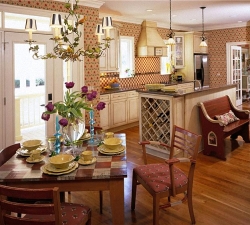
Enough part in the process of flooring, such a material as chipboard is used. Among its main advantages, strength and cheapness should be distinguished. But, nevertheless, the final result of work on the floor depends on the choice of this material. We will talk about the features and characteristics of the chipboard further.
Table of contents:
- DSP for the floor: properties and characteristics of the material
- Paul Pilments: Advantages and disadvantages
- Recommendations for choosing sheets of chipboard for the floor
- Chipboard downstone moisture -resistant for the floor - characteristics
- Laying of chipboard floors: how to build a black floor
- Covering for chipboard: how to equip a floating floor
- Installation of chipboard on a concrete base
DSP for the floor: properties and characteristics of the material
DSP is a material in the form of a chip plate, for the manufacture of which a wood chips are used, compressed using a hot method. In addition, the composition of chipboard contains an adhesive that is not of mineral origin.
In the ratio with the design features of the chipboard, it happens:
- one-;
- three-;
- multi -layer.
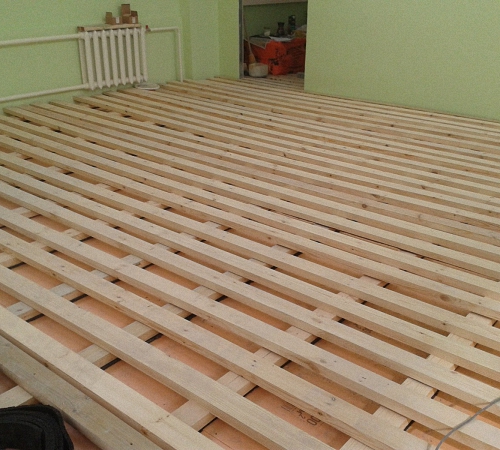
In addition, Mark A and B are distinguished, which differ in strength characteristics to bending, deformation, moisture resistance and other technical indicators.
Also, chipboard is the first and second grade. The material belonging to the first grade has practically no defects in the form of cracks, spots, chips, protrusions or recesses. Second -grade material is distinguished by the presence of large defects. In addition, there is a chipboard without a variety, that is, a plate on which there are cardinal defects.
In relation to the features of the outer layer of chipboard, it happens:
- with the presence of a small -scale surface, a decoration option using polymers is possible;
- standard material, subjected to decoration using veneer;
- DSP with the presence of a coarse -grained surface is most often used in the construction industry.
In the ratio with the level of finishing the surface of the chipboard happens:
- grinded;
- unnecessary.
In addition, there is a criterion for the distribution of material depending on the content of formaldehyde components in it. In the ratio with moisture resistance, the slabs are prone to deformation, when moisture and indiscriminately deformation enters them.
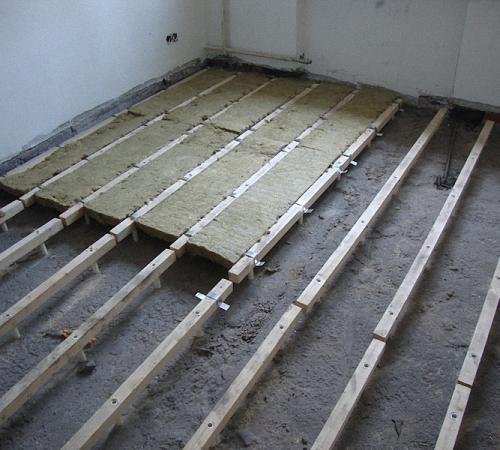
The option of processing the material with special impregnations is possible that improve its fire safety. Three classes of chipboard are distinguished in relation to the density:
- high;
- average;
- short.
In the ratio with the type of coating of DSP, it happens:
- laminated;
- extrusion.
The first option involves a material that has been exposed to high temperature and pressure, while special film material is glued to it. More expensive varieties of such chipboard are covered with a special varnish that increases its resistance before mechanical damage and moisture. Using lamination, it is possible to achieve an attractive appearance of the coating. This type of chipboard is widespread in the furniture industry.
The second option is a material in which wooden fibers are located in a perpendicular direction in relation to the plate. Thus, this material has reduced strength.
The use of chipboard is primarily connected with the insulation of wooden floors or concrete ceilings. It is this material that ultimately allows you to obtain a perfectly even structure with high thermal insulation and soundproofing properties. At the same time, the costs of arranging this coating will be minimal.
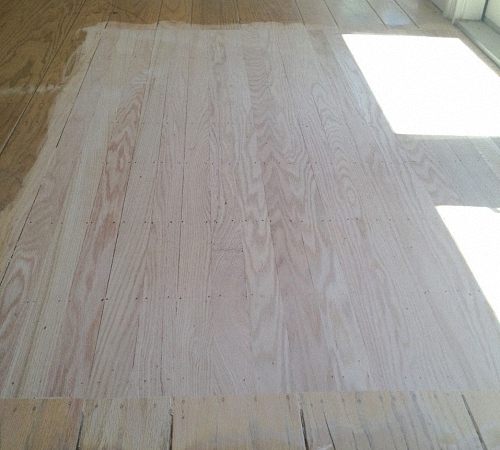
Paul Pilments: Advantages and disadvantages
We begin the characterization of chipboard with its shortcomings, since she does not have so many of them. First of all, this is the appearance of the material, which, although it is wooden, is not much like wood. Also, a significant drawback of chipboard is to add resins to it that perform the function of a binder for sawdust or other components of the woodworking industry.
Among the advantages of the chipboard we select:
1. Available chipboard for the floor price.
This factor makes this material one of the popular in both construction and furniture industries.
2. Lightness and simplicity of work.
The material is well cut, easily installed and does not require special skills in working with it.
3. Environmental safety.
This advantage is relevant if, in the manufacture of chipboard, all technological norms and requirements for the quality of the binder were maintained.
4. Great operational properties.
The use of chipboard as a base for laying the main sex is characterized by a significant period of use of the material.
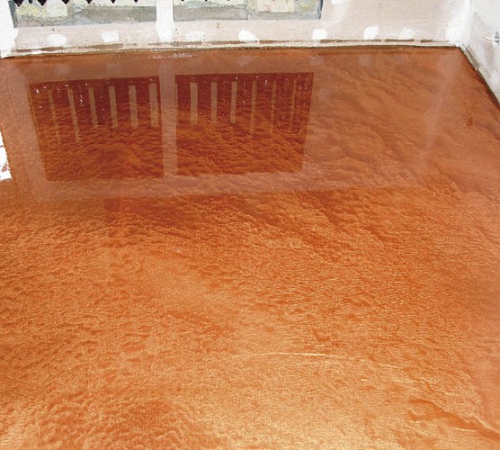
5. Multifunctionality.
Great for installing a numerical floor from parquet or coating of synthetic origin.
6. High sound and thermal insulation indicators.
Thanks to this, DSP is widespread in the manufacture of doors, furniture, for flooring and even for wall decoration.
Recommendations for choosing sheets of chipboard for the floor
Before you familiarize yourself with the advice on choosing chipboard, you should consider the classification of this material. Most often, chipboard slabs are divided in relation to their variety:
- Chipboard 1 grade;
- 2 varieties;
- 3 varieties.
The materials of the first, second and third varieties differ in the ratio with strength, evenness, the presence of grinding, defects and other technical indicators. In order for the chipboard to purchase a perfectly even edge, special equipment is used.
1. Plates that belong to the first grade are distinguished by the absence of any coating. Their external side, the same as filling. However, these plates are covered with a melamine film, which is outwardly similar to plastic. Various kinds of pictures or photos are applied to its surface. The cost of laminated chipboard for the floor is much higher than usual.
2. Wood chips, belonging to the second grade have small scratches and chips. Their cost is much lower than that of the chipboard of the first grade. The scope of this material is limited to the construction industry. At the same time, this type of chipboard is a great option for flooring.
3. DSP 3 varieties is characterized by low quality and the presence of a sufficiently large amount of defects, especially mechanical origin, which are located on the end sections of the plates. This type of chipboard is great for the construction of elements such as formwork or inter -stratum partitions.
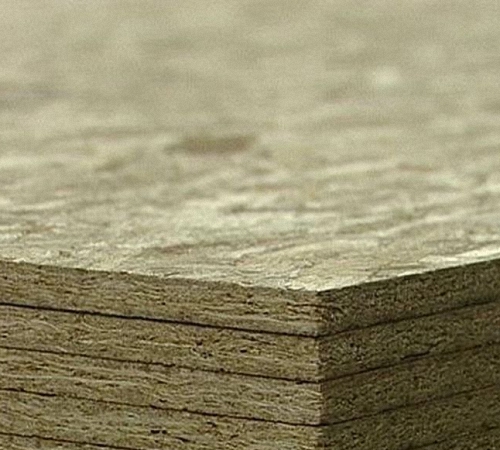
In order to buy chipboard for the floor, you should contact any construction store. In addition, the emission class is an important factor when choosing chipboard. Each of the plates to some extent contains formaldehyde resins in the composition. Certain classes have less than this substance, while others have more. This material is able to evaporate from chipboard when moisture or fever on it is exposed to it. There are two options that describe the amount of formaldehyde in the plates, class E1 and E2.
The first option is safer and most often used in the arrangement of housing premises. The standard of manufacturing of classes of class E1 allows the content of a hundred grams of a plate of not more than ten grams of formaldehyde. It is these plates that are used in the manufacture of furniture intended for children.
The second class E2 means the fact that one hundred grams of the plate contains about thirty grams of formaldehyde. A less popular option, which is practically not used in residential premises, due to toxicity.
The scope of the use of chipboard is most often associated with construction. This material is often used in the conduct of internal finishing work, during the manufacture of door structures, the basics for the ceiling or floor.
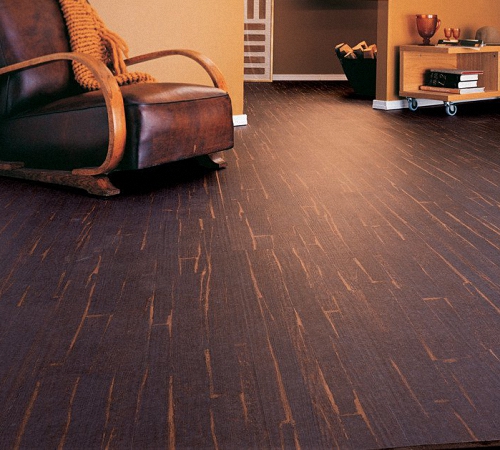
Chipboard downstone moisture -resistant for the floor - characteristics
As mentioned earlier, chipboard is a material that is made using the hot pressing method. That is why the chipboard is practically not prone to expansion. For a more convenient connection of the plates, manufacturers make plates with the presence of two grooves and two rowers on them, which ensure the evenness and density of their compounds.
When installing this kind of chipboard, there is practically no tool, and the installation time is significantly reduced. In addition, moisture -resistant chipboard for the floor contains special additives in the form of moisture resistant polymers. It is they that allow you to use this material in rooms with an average moisture level, such as a kitchen or a balcony.
Among the advantages of a shunt chipboard for the floor are highlighted:
- Easy installation. which is provided due to the presence of a spif-cancer;
- the presence of a perfectly flat surface on which there are no changes, gaps and other defects;
- simplicity of working with the material;
- the ability to use in rooms with a high level of humidity;
- Good operational properties.
It is the castle type of chipboard that allows you to equip an excellent floor of a floating type. In addition, with the help of this material, it is possible to build a false floor or a dry team screed, without using a solution or additional building materials.
In the ratio with the size of chipboard for the floor, plates of 1.5x4, 1.5x6, 1.5x8 m and so on are distinguished. The thickness of the chipboard for the floor is 1, 1.8, 2, 3 cm.
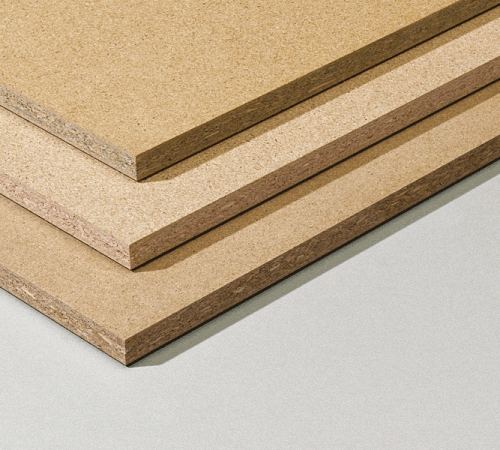
Laying of chipboard floors: how to build a black floor
The black flooring is also called a dry screed, since the materials that include water are not used in the process of its arrangement. It is the draft floor that is the basic base on which the main flooring is installed.
Instructions for leveling the floor of chipboard:
1. The lag is installed on the concrete base, the interval between which is 300-400 mm, if the sheet thickness is not more than 1.6 cm and 400-600 mm, when the sheets are installed with a thickness of 2.2 cm. Consider that near The walls are left a gap of 20 mm. In the presence of an uneven floor, all gaps should be filled with sand or slag.
2. If the floor is on the ground floor, then the entire space between the lags is filled with the help of a foam or polystyrene heater. Keep in mind that in this case vapor barrier is previously laid on the concrete base.
3. Using the construction level, check the horizontal base. In order for the floor to not creak during its operation, it is necessary to use building plastic or paper, which covers the surface.
4. Start laying chipboard from the wall located in the far corner of the room. Put the first and fix it on the floor using self -tapping screws. First, the central part of the sheet is fixed, the step of installation of fasteners is about twenty centimeters. Try to drown the hats of self -tapping screws at least one millimeter.
5. In order to seal the edges, smear the spike-canvas with the help of PVA glue or building mastic based on latex.
6. Next, the following plate is installed and tightly pressed to the surface of the previous one. In order to avoid damage to the material, there are bars that are designed to fit it.
7. Then the following bars are installed. They are installed in such a way that the seams between them are directly on the lags. If half a narrow corridor is equipped, then the frame is located perpendicular to the movement.
8. In the formation of vertical irregularities, they are polished and cleaned of dust and dirt. Next, a finishing floor is made, which involves installation work on the installation of coating from a laminate, linoleum, tile or parquet board.
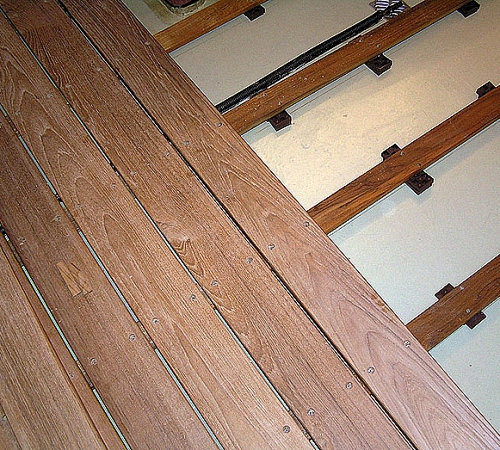
Covering for chipboard: how to equip a floating floor
The arrangement of the floating floor involves the lack of a rigid connection between the plates installed on the floor. Thus, an intermediate layer is formed, which allows for heat and sound insulation of the floor.
The use of this technology is associated with the arrangement of floors with strong flaws and changes. To arrange a floating floor from the DSP, the following actions should be performed:
1. Lay vapor barrier on the basis of concrete. If the main floor is made of wood is best to use Pergamine.
2. Pour the filler in the form of dry expanded clay or slag. Make it align and leveling.
3. Install the material in the form of a construction membrane or paper.
4. Near the wall, which is the beginning of installation, the wedges should be installed.
5. Start the installation of chipboard, in the process of performing work, use glue that will help connect the plates with each other.
6. Take care of the presence of an interval between the wall and chipboard the size of one centimeter.
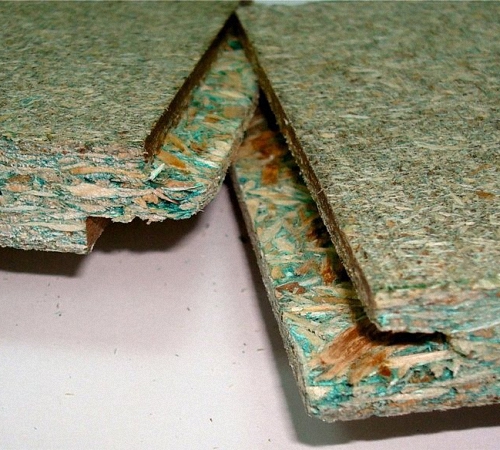
Installation of chipboard on a concrete base
There are two ways to install chipboard on the base made of concrete:
- installation directly on the floor;
- Installation on the lags.
The first option seems possible only if the floor made of concrete is perfectly even and does not have horizontal drops.
If there are small irregularities on the floor, then it is previously filled with thinly screed. To defend the screed, you should wait at least 3-4 weeks. After the concrete becomes durable, the base is cleaned of dust and dirt using a construction vacuum cleaner. Sheets of DSP cut in a ratio with the size of the room.
Tip: Before starting installation work, it is recommended to apply an Olyphus or antiseptic to the surface of the sheets of chipboard, which improve its operational characteristics.
On the basis of work should be carried out to mark it. In the ratio with markings in concrete, holes are drilled into which dowels will be installed. Lay the sheet in such a way as to get a gap of 15 millimeters. To fix the material on a concrete base, use dowels.
The second option for laying chipboard involves the performance of such actions:
1. The choice of chipboard thickness depends on the step with which the lags were installed. Keep in mind that chipboard is more fragile material than for example plywood or wood, so the lags should be located near each other.
2. The arrangement of the screed, when choosing this method, is optional. In this case, there is no need to waste time and extra material means for its manufacture.
3. In order to compensate for the irregularities formed during the arrangement of the lag, small parts of plywood or wood are placed under them.
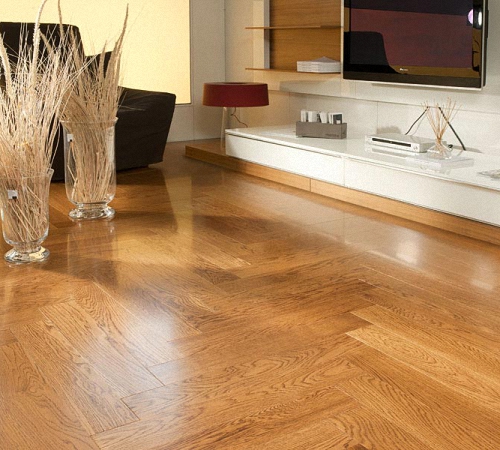
4. First, mark the base in the ratio with the location of the lag. Lay the lags so that the step of their laying is the same.
5. Next, in the space between the lags, the insulation is laid. With the help of questionnaires, lags are fixed on the floor.
6. Put the insulation, mineral wool is best suited. She should fit tightly to the lags. All the cracks that were formed between the layer of insulation and mineral wool are sealed using mounting foam.
7. Next, waterproofing is installed, in the form of foil or oilcloth. A rather acceptable option will be the use of a foam, which will play the role not only of hydro-, but also of thermal insulation.
8. Then a direct installation of chipboard is carried out, which are fixed on the floor with nails.
